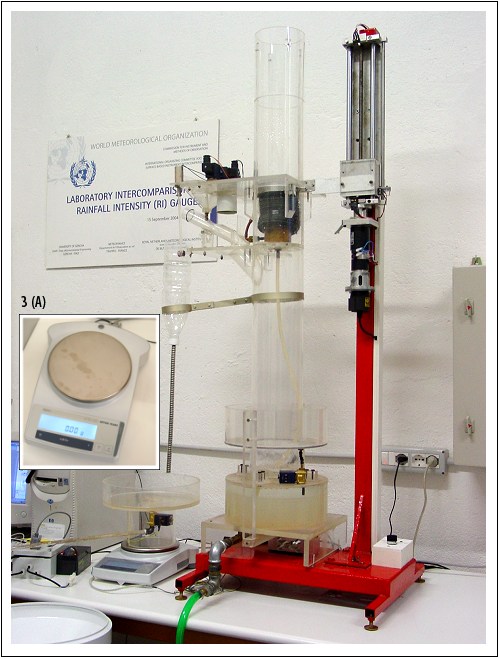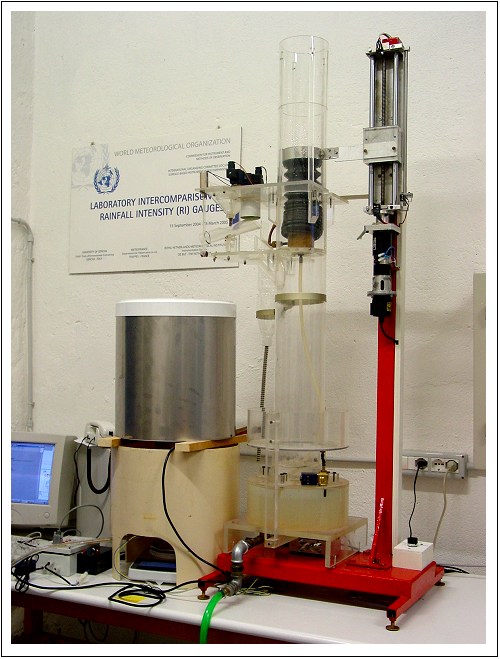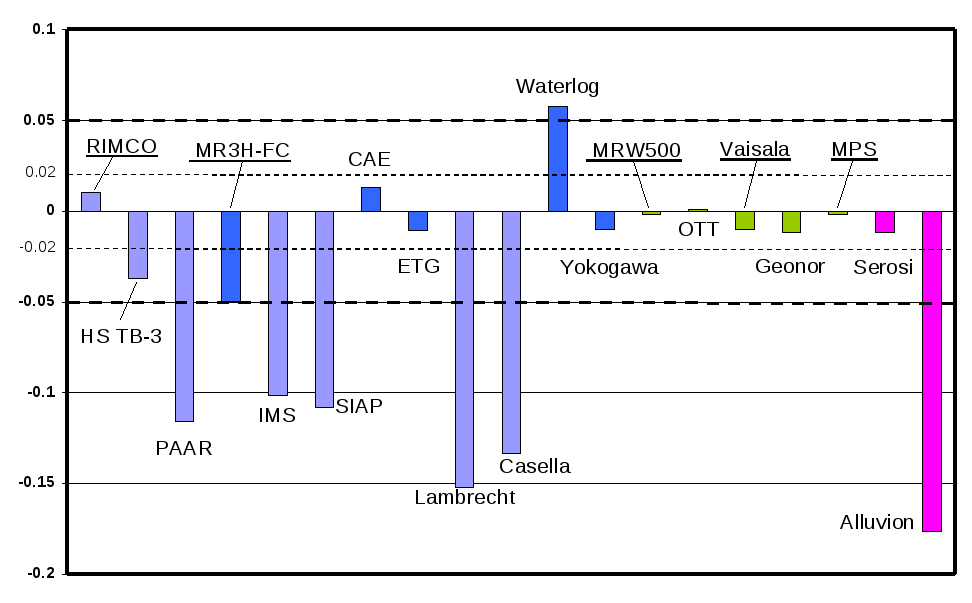
Special Issue:
"Rain sensors"
Guest Editors:
Prof. Filippo Giannetti
Prof. Luca G. Lanza
Deadline for manuscript submissions:
30 September 2021
Special Issue:
"Precipitation Measurement Instruments: Calibration, Accuracy and Performance"
Guest Editor:
Prof. Luca G. Lanza
Deadline for manuscript submissions:
30 September 2020
New publication:
Cauteruccio et al. (2020)
The role of free-stream turbulence in attenuating the wind updraft above the collector of precipitation gauges.
Journal of Atmospheric and Oceanic Thechnology, 37, pages 103-113.
(.pdf)
The first european standard on the accuracy of precipitation measurements instruments has been published as EN 17277:2019 "Hydrometry. Measurement requirements and classification of rainfall intensity measuring instruments"
kick-off meeting of the new EURAMET/EMPIR project INCIPIT "calibration and accuracy of non-catching instruments to measure liquid/solid atmospheric precipitation" hosted by the Lead Centre in Vigna di Valle.
The Lead Centre partecipated to the WMO/CIMO Technical Conference on Meteorological and Environmental Instrument and Methods of Observation in Amsterdam
The Lead Centre partecipated to the JMA/WMO Workshop on Quality Management of Surface Observations- RA II WIGOS Project in Tokyo
The Lead Centre partecipated to the Metoemet final meeting in Moncalieri (Tourin), presentig the results performed in the Research Excellence Grant (REG3) of the Meteomet2 project.
The Lead Centre partecipated to the EGU 2017 conference with poster presentations on wind tunnel experiments and precipitation measurements issues.
The Lead Centre will participate to the WMO TECO 2016 conference and the International Conference on Metrology for Meteorology and Climate with poster presentations on the more recent research developments and ongoing collaborations.
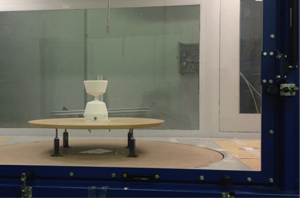
Wind tunnel experiments are currently under execution at the DICCA laboratories to provide information on rain gauges performance under turbulent winds and validation of CFD numerical analysis.
Oral presentation at the AMS annual meeting in New Orleans. Download the presentation.

Oral and poster presentations at the UrbanRain workshop (Pontresina). Download the short paper on the jointed CFD activity with EML.
The Lead Centre has recently signed a new research agreement with LSI LASTEM to study an improved rainfall intensity sensor compliant with UNI 11452:2012.
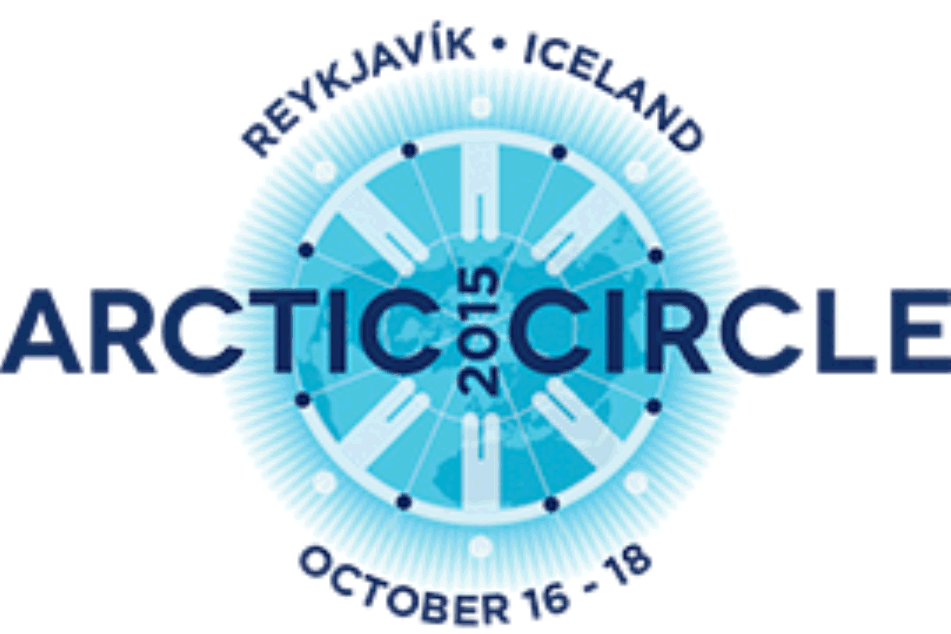
Presentation at the Arctic Metrology breakout session of the Arctic Circle 2015 Assembly.
New publications about the Lead Centre CFD studies available on AMS journals.

Installation and set-up of aerodynamic gauges and a laser disdrometer at the Vigna di Valle field site.
The WMO Laboratory Intercomparison of Rainfall Intensity (RI) Gauges was launched, simultaneously, in September 2004, in the laboratories of the Royal Netherlands Meteorological Institute, Météo‑France and the Department of Environmental Engineering (University of Genoa).
No intercomparisons of instruments for the measurement of RI had been organized earlier. Following the recommendations of the Expert Meeting on Rainfall Intensity Measurements, Bratislava, Slovakia, April 2001, it was considered as the first and necessary step to organize an intercomparison of such instruments in the laboratory. Some laboratory tests of rain gauges were done and reported in the literature, however no systematic intercomparison of a large number of instruments, in one or several laboratories, had yet been conducted.
The objective of the Intercomparison was to test the performance of catchment type rainfall intensity gauges of different measuring principles under documented conditions. Other important tasks were to define a standardized procedure for laboratory calibration of catchment type rain gauges, and to provide information relevant to improving the homogeneity of rainfall time series with special consideration given to high rainfall intensities. Finally, a comment on the need to proceed with a field intercomparison of catchment type of rainfall intensity gauges was required as well as to identify and recommend the most suitable method and equipment for reference purposes within the field intercomparison of catching and non-catching types of gauges.
The Final Report of the Intercomparison is available here, and is published as IOM Report n. 84 (TD 1304) by WMO/CIMO.
The CIMO Project Team, consisted of ET/IOC Chair, the Project Leader and Site Managers coordinated the work of the laboratories involved in the intercomparison. The 19 pairs of participating instruments from 18 manufacturers were divided into three groups, with each group being tested for a period of about three to six months in each of the laboratories, in order to obtain a high degree of confidence in the results. The first phase of tests had successfully concluded by 15 February, the second by 15 May 2005 and the third by September 2005. All the cost related to laboratory intercomparisons was born by the laboratories and the manufacturers involved.
The majority of the participating instruments were tipping-bucket gauges which are the most widely used in operational networks. Another group of instruments are weighing gauges, while two of the participating instruments use a different measuring principle, namely, a water level sensor based on conductivity measure.
